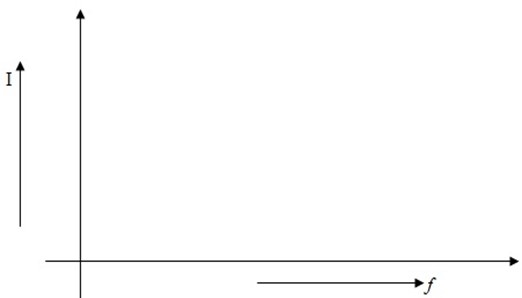RESONANCE IN R – L – C SERIES A.C CIRCUIT
The R- L – C series A.C circuit is said to be in electrical resonance when the circuit power factor is unity
XL = XC
This is called series resonance.
Resonant frequency
This is the frequency at which the reactance of the coil has the same magnitude and so giving the current in a circuit its maximum value.
XL = XC
where
XC = capacitive reactance
XL= inductive reactance
The frequency at which resonance occurs is called the resonant frequency
The resonance in R – L – C series circuit can be achieved by changing the supply frequency because XL and XC are frequency dependent
At a certain frequency, called the resonant frequency fo, XL becomes equal to XC and resonance occurs.
At resonance
XL = XC



If L and C are in Henry and farad respectively, then ƒo will be in Hz
EFFECTS OF SERIES RESONANCE
When series resonance occurs, the effect on the circuit is the same as though neither inductance nor capacitance is present.
The current under this condition is dependent solely on the resistance of the circuit and voltage across it.
(i)The impedance of the circuit is minimum and equal to the resistance of the circuit.
From 
When Z=ZR, XL = XC


ZR = R
At series resonance
(ii) The circuit current is maximum as it is limited by the resistance of the circuit alone.

(iii) Since at series resonance the current flowing in the circuit is very large, the voltage drops across L and C are also very large.
In fact, these drops are much greater than the applied voltage.
However, voltage drop across L – C combination as a whole will be zero because these drops are equal in magnitude but 1800 out of phase with each other.
RESONANCE CURVE
Resonance curve is the curve between the circuit current and the supply frequency.
Figure below shows the resonance curve of a typical R-L-C series circuit.

Current reaches the maximum value at the resonant frequency fo, falling off rapidly on either side at that point.
It is because if the frequency is below fo, XC > XL and the net reactance is no longer zero.
Net reactance X
X = XC – XL
If the frequency is above fo, then XL > XC and the net reactance is again not zero.
Net reactance X
X = XL – XC
In both cases, the circuit impedance will be more than the impedance ZR at resonance.
The result is that magnitude of circuit current decreases rapidly as the frequency changes from the resonant frequency.
The effect of resistance in the circuit. The smaller the resistance, the greater is the current at resonance and sharper the resonance curve.
On other hand, the greater the resistance, the lower is the resonant peak.